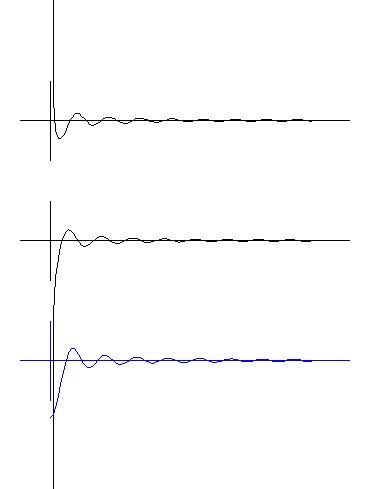Milo Wolff's Space Resonance Visualized:
Animation of a Standing Wave This animation of the waves of an electron lets you imagine
vividly what an electron looks like if it were big enough to see.
For a more detailed description of the Standing Wave and how it works, visit the page "Seeing an Electron" at this site 
. |
The physical structure of the charged particles involves inward and outward spherical quantum waves. At the center, spherical rotation* changes
in-waves to out-waves. (Needed: a graphics programmer who can display these simple mathematical equations in 2D or 3D computer animation. Contact Milo Wolff
if interested.)
The simplest resonance is the electron whose mathematical physical structure is exactly known.
Electron waves (comprising all charged particles) extend to infinity serving as the 'communicator' of the natural laws. In contrast, the hadrons exist in a
closed, high density region of high-frequency waves analogous to waves inside a drum or a hollow sphere. No one is sure. It is thought that the many
modes of possible vibration in the closed space correspond to the many types of hadron particles. All the qualitative properties point to this conclusion. But no mathematical solutions of these
3D wave modes have been investigated. Mathematicians, please rise to the challenge! The Spherical Wave Concept of Matter solves Quantum Theory Enigmas
. Four thousand years ago, Democritis created the point particle of mass to represent the fundamental elements of matter. This concept was satisfactory
until about 1900 when quantum properties of matter were found. Then, puzzles, problems, and paradoxes appeared because most properties of matter derive from the wave structure of particles.
Democritis couldn't know this and until recently few persons challenged his embedded concept. Nevertheless, Schroedinger, deBroglie, Dirac, and
Einstein, the founders of quantum theory, preferred a wave structure of matter, and in the last decades researchers have validated their intuition. The Space Resonance concept -
matter structured of spherical wave centers - avoids and explains the paradoxes and
problems of point particles. In hindsight it is simple; since mass and charge substances do not exist in nature, removing them
from particle structure also removes their problems. In their place, the wave centers possess the properties of mass and
charge which we observe in a human-sized laboratory, but without the problems of finding mass points which do not exist!.
One of the fascinating puzzles explained below by this new structure is the former mystery - the spin of the electron! The
overwhelming proof of the Wave Structure of Matter is the discovery that all the former empirical natural laws originate from the wave structure. The probability of a coincidence is infinitesimally small.
New Insights. A simple spherical wave structure of the particles leads to new exciting insights, including: 1) the origin of
the natural laws, and 2) the relationships between the smallest things - particles - and the largest, the universe itself. These
insights are breath-taking in their scope and potential. This structure appears to agree with and predict experimental observations. Origin of the Laws.
The origin of the natual laws are basically concerned with the behavior and forces between two
particles. Using Democritis' static particle model, there was no way to understand how forces, locations, or directions
could be communicated between the particles. Now the inward and outward spherical waves of the two particles provide
that infomation continuously. The origin of the natural laws are described in a book, "Exploring the Physics of the Unknown Universe
," available ($15 paper, $39 hardcover). See it at the internet bookstore amazon.com.
The Particle vs. the Universe. The relationships between particles and the entire universe are interacting with each other through their inward and outward waves. Thus they become joined into one
ensemble of waves which determines the behavior of the individual particles. The simplest example is Mach's Principle, which proposed (1890) that all the matter of
the universe determines the law of inertia (F=ma). This and other relationships are discussed in the paper "The Eightfold Way of the Universe." |
